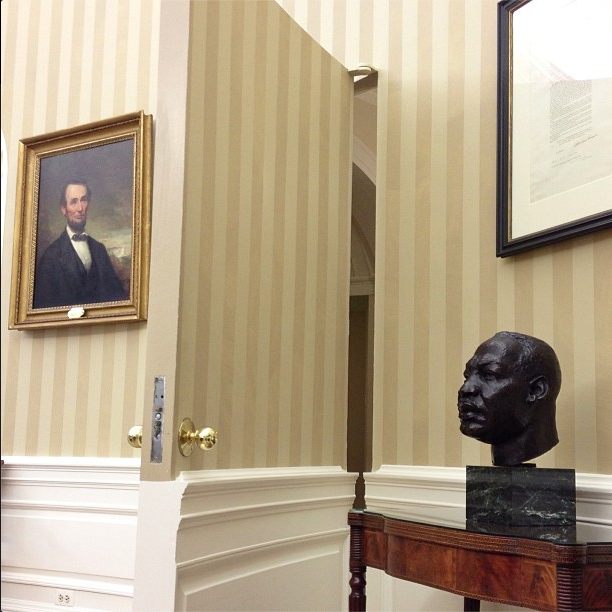Prepare to have your preconceived notions about immigration challenged. Pia Orrenius, 45, was born in Sweden and raised and educated in the U.S. She is a labor economist with the Dallas Federal Reserve Bank who has been studying the impact of immigration for two decades. Orrenius sees immigration through the prism of research, resulting in views that buck much of today’s accepted political dogma. She supports relaxing immigration restrictions for high-skilled workers and extending portable work visas to low-skilled workers, and warns of the unintended consequences of increased border enforcement.
It seems when we talk about immigration from a political perspective, much of the focus is on border enforcement. How important is border enforcement?
In terms of the immigration debate, border enforcement — while it’s very necessary and an important component of immigration policy and national security policy and defense policy — has unintended consequences. I know some people like to argue that border enforcement is not effective. It is, actually, effective. It’s just that you need a lot of it for it to be effective. And it’s very expensive. So you put all this costly border enforcement in place, and what happens? Fewer people get in. When fewer people get in, the wages of illegal immigrants go up. So if you’re lucky enough to get in, the reward is higher. That’s one unintended consequence.
I’ve heard you speak before about cyclical migration patterns and how, by making it so difficult to get in, people who once came alone now bring families. And families are what create the negative economic impact, because they use up education and health care dollars.
It reduces the circularity [of migration patterns] so people stay here longer. And they are also more likely to try to reunify with their families by bringing them here. So you actually have this unintended consequence of initially increasing the permanent population of illegal immigrants when you implement tough border enforcement. Whereas people before were more likely to leave their families in, say, Mexico and just migrate for work and then migrate home.
Last week, the Senate killed John Cornyn’s amendment to the immigration reform bill, which would have required raising the current 45 percent apprehension rate to 90 percent. What do you think a 90 percent rate would do?
If you put a border patrol agent every other meter on the border with Mexico, yes, you will not have any illegal immigration because they will be standing there in the way. But the question that’s not being asked is: At what price? At what cost to the taxpayers? And what else could you do with that money?
Then what do we do about illegal immigration?
Interior enforcement. Interior enforcement policies are, in so many ways, superior. They’re not nearly as expensive and are more efficient. If you have sensible interior enforcement policy, like universal E-Verify, then you’re really going to reduce the pressure on the border and save resources.
What’s the impact of illegal immigration on U.S. workers?
For native workers who compete closely with low-skilled immigrants, there is an adverse wage effect. But it’s quite small, smaller than you would think. And you don’t really find any adverse effects with high-skilled immigrants. Other forces drive wages to a much greater extent. Labor economists generally agree the most detrimental force on low-skilled wages, especially blue-collar men, is technology. And globalization — the offshoring of jobs that were traditionally high-paying. There are other things like the decline of unionization and in the real value of the minimum wage.
There have also been changes in the U.S.-born workforce — the aging that people talk a lot about and the increased education levels. The supply of U.S.-born workers who have less than a high school degree has been falling over time and is continuing to fall. These workers coming from Mexico and other countries are filling a niche.
Demographer Steve Murdoch has often said that, because of the graying of the U.S. workforce, we need a significant in-flow of immigration.
Does the economy need immigration? Do we need faster economic growth, do we need a more efficient, productive economy? Do we need it, or do we want it? That’s the distinction. If we want the economy to grow at potential, if we want to continue to rely on the services we’re accustomed to at a cost we’re accustomed to, if we want to continue living the way we have been living, yes, we need these workers. It’s just that the word need is tricky in this context.
A lot of the back story to what’s happening in Washington today has to do with what happened with the Immigration Reform and Control Act of 1986. There’s a feeling that we gave illegal immigrants a path to citizenship and now we have three or four times as many.
What happened with IRCA is that we legalized 2.7 million undocumented immigrants and then, 25 years later, we have 11 million more. But there are several reasons why what happened under IRCA is not going to happen again. First, look at the supply. Look at where people were coming from. They were overwhelmingly coming from Mexico. Well, that supply push has gone away. Mexican fertility has fallen from six to eight children per woman down to two to 21/2 per woman. (Don’t ask me how you can have half a child.)
Yeah, the poor mother. Actually, the figure you cited in your report is 2.2.
OK, 2.2. So you don’t have that demographic pressure coming from Mexico.
Another reason is technology. In the ’80s and ’90s, it was so hard to enforce the border because we didn’t have the technology to process these people. We couldn’t take their fingerprints and keep them in a database. It was a revolving door. Nowadays, we know exactly who they are, who’s getting caught two, three, four times. And we can implement interior enforcement as well. And pretty cheaply, like an E-Verify program. That was not possible 20 years ago. With technology, we will never go back to where we were before, where a half a million or a million undocumented immigrants were coming in, on net, in a given year. We’ll never go back to that.
This Q&A was conducted and condensed by editorial writer Ralph De La Cruz. His email address is rdelacruz@dallasnews.com. Pia Orrenius’ email address is pia.orrenius@dal.frb.org.




 Posted by Ed Darrell
Posted by Ed Darrell 





























